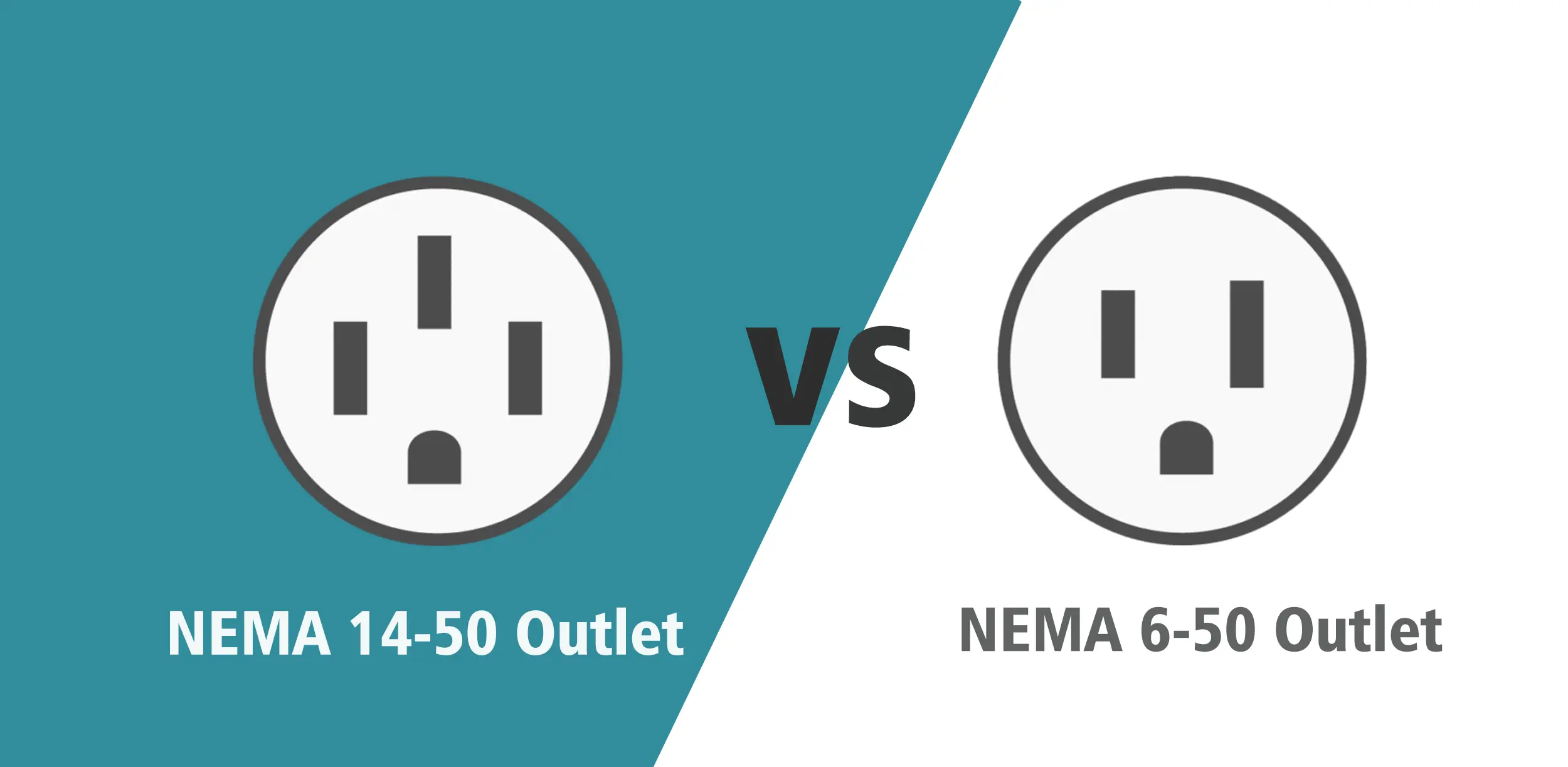
Comparing Two Popular 240V EV Charging Outlets: Power, Cost, and Compatibility
Installing a plug-in Level 2 EV charger at home using a NEMA connector? One of the most common questions is: NEMA 14-50 vs NEMA 6-50 — which one should you use? Both are 240V, 50-amp outlets widely supported by EVSE manufacturers—but they differ in wiring, compatibility, installation cost, and code requirements.
This guide breaks down everything you need to know about NEMA 14-50 vs NEMA 6-50 to help you choose the right outlet for your home EV charging setup.
1. Common NEMA Plug Types for 240V Applications
The following NEMA plugs and receptacles are commonly used for 240V applications—especially in residential garages, EV charging setups, dryers, and other high-power appliances:
Considering power demands and outlet availability in North America, NEMA 14-50 vs NEMA 6-50 is the most common outlet decision faced by home EV charger installers. While both are rated for 50A, the NEC recommends limiting continuous loads to 80% of the rated current, meaning a maximum of 40A continuous is advised. This results in about 240V x 40A = 9.6 kW of charging power.
In comparison, the NEMA 14-60 outlet supports up to 60A (or 48A continuous per NEC guidelines), delivering a maximum of 11.5 kW. However, it requires heavier wiring and a higher-capacity panel, making it uncommon in standard residential EV charger installations.
2. Basic Specifications Comparison
| Feature | NEMA 14-50 | NEMA 6-50 |
|---|---|---|
| Voltage | 240V | 240V |
| Breaker Size | 50A | 50A |
| Max Continuous Load | 40A (NEC 80% rule) | 40A |
| Wire Count | 4 (2 hot + neutral + ground) | 3 (2 hot + ground) |
| Neutral Wire? | ✅ Yes | ❌ No |
| Ground Wire? | ✅ Yes | ✅ Yes |
| GFCI Required (2020+) | ✅ Yes | ✅ Yes |
| Common Uses | EV charging, electric ranges, RV parks | EV charging, welders |
“P” denotes plug; “R” denotes receptacle.
3. Wiring Differences and Code Implications
In the NEMA 14-50 vs NEMA 6-50 debate, wiring is one of the biggest differentiators:
- NEMA 14-50 requires four wires, including a neutral. This is important if your EVSE or future appliance needs a neutral connection.
- NEMA 6-50 only requires three wires—no neutral. It simplifies wiring and reduces cost, especially for short runs.
🛠️ Some modern EVSE units do not use the neutral wire—making NEMA 6-50 fully compatible.
⚠️ However, if you ever want to repurpose the circuit for an appliance that requires neutral (e.g., electric range), NEMA 14-50 offers more long-term flexibility.
4. Installation Cost and Practical Considerations
| Factor | NEMA 14-50 | NEMA 6-50 |
|---|---|---|
| Material Cost | Higher (4 conductors, thicker cable) | Lower (3-conductor cable) |
| Panel Space | More complex (requires neutral bar) | Simpler (no neutral termination) |
| EVSE Support | Almost all EVSEs support it | Many EVSEs support it (check specs) |
| Adaptability | More flexible for future appliances | More purpose-specific for EVs |
If minimizing installation cost is your goal—and your EVSE doesn’t require a neutral—NEMA 6-50 is a safe and efficient choice.
5. Safety, GFCI, and NEC Requirements
As of NEC 2020, all 125V–250V outlets in residential garages must have GFCI protection. This applies to both NEMA 14-50 vs NEMA 6-50 outlets.
- GFCI breakers for 50A circuits cost ~$100–$150
- Some users report nuisance tripping; always test EVSE + breaker combo
- Install in NEMA 3R or weather-rated enclosures for outdoor use
6. Summary: Which Outlet Should You Choose?
| Scenario | Recommended Outlet |
|---|---|
| Want flexibility for future appliance use | NEMA 14-50 |
| EVSE requires a neutral wire | NEMA 14-50 |
| EVSE doesn’t require neutral, lower cost preferred | NEMA 6-50 |
| Outdoor / detached garage (with GFCI) | Either |
| Existing 14-50 outlet in place | NEMA 14-50 |
| New build, budget-focused | NEMA 6-50 |
7. Conclusion
Both NEMA 14-50 vs NEMA 6-50 are safe, NEC-compliant, and capable of delivering up to 40A of continuous power. The right choice depends on your charger’s compatibility, long-term plans, and installation cost.
If you want maximum flexibility and future-proofing, go with NEMA 14-50.
If your EVSE doesn’t need a neutral and cost is your priority, NEMA 6-50 is an equally safe and reliable choice.
📘 For more outlet types, see: NEMA 14-50 and Other 240V Outlets for EV Charging
